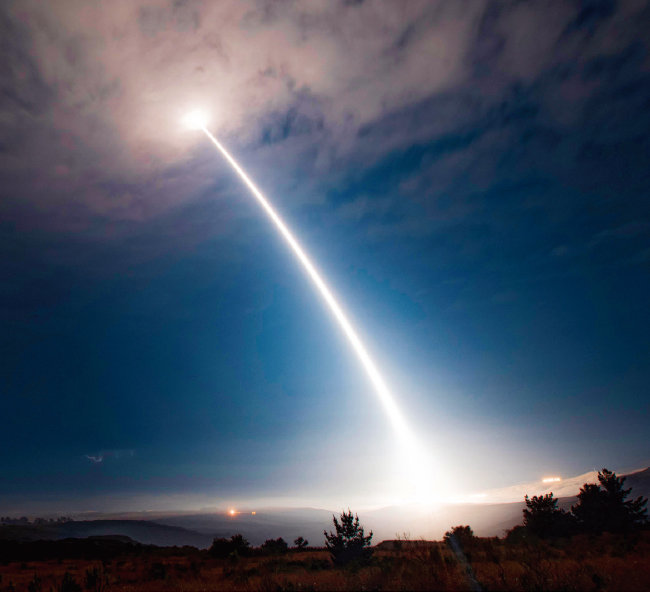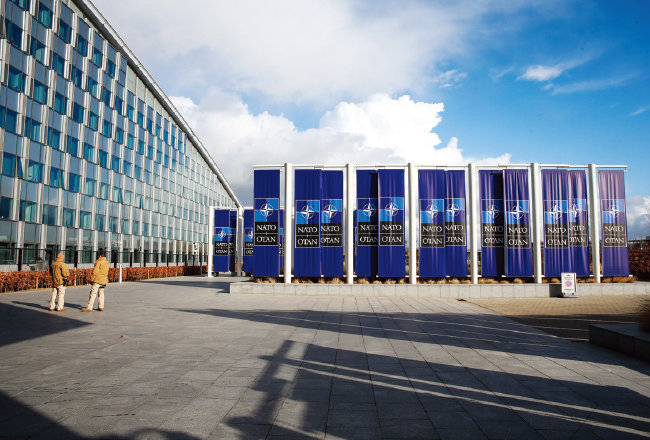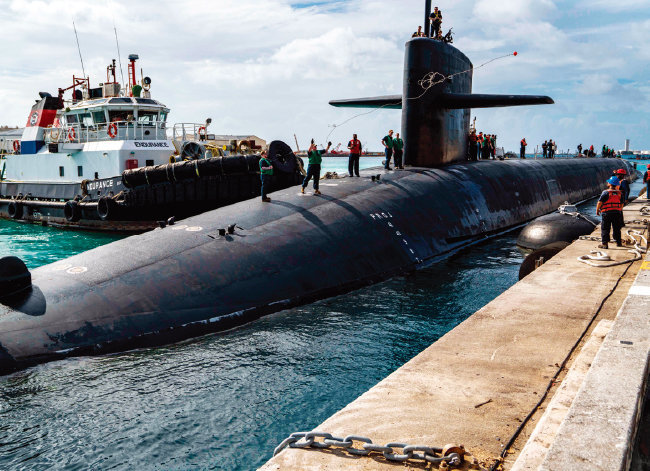South Korea can’t participate in decision-making to use nuclear weapons… Strategic One Submarine deployment should also be viewed as a ‘diplomatic investigation’
The Korea-US summit between President Yoon Seok-yeol and US President Joe Biden was held in the form of the second state guest invitation by the Biden administration, who was in his third year in office. During his visit to the US for 7 days and 5 nights from April 24 to 30, President Yoon received a warm welcome from the US side. The contents of the ‘Washington Declaration’, which came out on April 26, also attracted attention. The framework is that South Korea and the U.S. will establish a new consultative body, the Nuclear Consultative Group (NCG), and deploy US strategic nuclear-powered submarines (wonsubmarines) to the Korean Peninsula in the face of North Korea’s nuclear and missile threats. Regarding the meaning of the ‘Washington Declaration’ in a speech and interview at Harvard University Kennedy School, the last public schedule of his visit to the United States, President Yoon said, “The concept of mutual defense between Korea and the United States that includes nuclear weapons will be upgraded from the 1953 mutual defense treaty based on conventional weapons. It is an unavoidable situation,” he said. In the passport, there is also an evaluation that “the Washington Declaration is ‘the 2nd ROK-US Mutual Defense Treaty’”.
This summit was held at a very important time in terms of international politics and the security situation on the Korean Peninsula. South Korea was faced with numerous security challenges that required tangible results immediately. First of all, President Yoon should have issued a clear message on which side the Republic of Korea will stand on between totalitarianism and liberal democracy in the new Cold War system, which has become more evident in the wake of the Russia-Ukraine War, and solidified its position and role among the free camp’s allies. did. It also had to come up with a solution that could reassure the public, who are feeling anxious about North Korea’s nuclear threat reaching its worst and the U.S.’s incomplete pledge of extended deterrence. However, it is my analysis that the performance of this visit to the US is quite disappointing in terms of such security tasks.
As a result of this visit to the United States, the government praises itself, saying that it has been promised to establish an NCG with the United States and deploy strategic nuclear submarines on the Korean Peninsula at any time. It means that the existing ‘nuclear umbrella’ has been strengthened into a ‘nuclear shield’. Even if the NCG is not set up, there are already four consultative bodies in which the two countries discuss extended deterrence. They are the Extended Deterrence Strategy Consultative Body (EDSCG), the Deterrence Strategy Committee (DSC), the Integrated Defense Consultative Body (KIDD), and the ROK-US Military Commission (MC). If so, what is the difference between the newly established NCG and the other four consultative bodies? Looking at the full text of the Washington Declaration, NCG is highly likely to become a rooftop organization.
In the Washington Declaration, “The United States undertakes to make every effort to consult with the Republic of Korea in the event of any possible use of nuclear weapons against the Korean Peninsula in accordance with the declarative policy of the United States Nuclear Posture Report, and the ROK-U.S. Alliance maintains robust communications to facilitate such consultations. We will continue to maintain our infrastructure.” Let’s take a look at the part where it is stated that “we will make every effort to discuss the use of nuclear weapons” with South Korea in case of emergency, rather than “we will discuss the use of nuclear weapons.” Since it was not compulsory to consult with South Korea regarding the use of nuclear weapons in an emergency, it is read to the effect that consultations may not take place in some cases.
The Washington Declaration also includes the sentence “(through the NCG) to cooperate to enable joint implementation and planning of Korean conventional support for the US nuclear operation in case of emergency.” However, nowhere in the declaration does it say that South Korea is given the right to make operational decisions, like NATO-style nuclear sharing. It is merely saying that the two countries cooperate in discussing ways to plan and jointly execute the operation, with South Korea supporting the ‘US nuclear operation’ through conventional forces. In fact, right after the announcement of the Washington Declaration, when reports in the Korean press compared this cooperation to “NATO-style nuclear sharing,” a high-ranking US government official said, “The US has no intention of deploying any nuclear weapons, including tactical nuclear weapons, in South Korea.” “He drew a line.
 The U.S. Air Force test-fires the Intercontinental Ballistic Missile (ICBM) Minuteman-3 from Vandenberg Space Force Base in California in August 2020. newsis
The U.S. Air Force test-fires the Intercontinental Ballistic Missile (ICBM) Minuteman-3 from Vandenberg Space Force Base in California in August 2020. newsisLet’s also look at the phrase “in accordance with the declarative policy of the US Nuclear Posture Report” that appears in the Washington Declaration. On page 8 of the US Nuclear Posture Review (NPR) released in October last year, there is a content related to the declarative policy of the Nuclear Posture Report mentioned in the Washington Declaration. The United States defined the fundamental role of nuclear weapons in NPR as ‘deterrence’ and specified that “The United States would only consider the use of nuclear weapons in extreme circumstances.” Combining the contents of the ‘declarative policy’ and the Washington Declaration, “The United States does not ‘use’ nuclear weapons only in extreme situations, but ‘consider using’ them. We will make efforts with South Korea to discuss considering the use of nuclear weapons in case of an emergency on the Korean Peninsula.” In other words, it seems more reasonable to interpret it as saying, “I will try to discuss with South Korea about considering the use of nuclear weapons in an emergency,” rather than nailing it to discussing the use of nuclear weapons with South Korea in case of emergency.
 NATO Headquarters in Brussels, Belgium. newsis
NATO Headquarters in Brussels, Belgium. newsisRegarding the installation of the NCG, how should we view the evaluation of some in the presidential office, saying, “Korea and the U.S. will not bring nuclear weapons to Korean soil like NATO did, but the depth and breadth of consultations will be much stronger with the installation of the NCG.” NATO-style nuclear sharing works in the following way: First, nuclear weapons are deployed at military bases in nuclear-sharing countries. And in case of emergency, the U.S. and the country concerned discuss whether to use nuclear weapons. Specifically, it is to mount nuclear weapons on the fighters of the country so that they can actually deliver them. In contrast, South Korea is not promised redeployment of tactical nuclear weapons, nor can it intervene in decision-making on the use of nuclear weapons. Nevertheless, there is no basis for the perception that the establishment of the ROK-US NCG is much stronger in terms of depth and breadth of consultation than NATO-style nuclear sharing, which stipulates real ‘nuclear sharing’.
The U.S. strategic nuclear submarine deployment, highlighted by the achievements of this visit to the U.S., is not very effective when considering reality. Regarding the deployment of strategic nuclear submarines, the Office of the President said, “For the first time since the early 1980s, we have decided to regularly deploy submarines equipped with nuclear missiles in the waters around the Korean Peninsula.” In the case of nuclear submarines, even if only ‘regular deployment’ is agreed, in effect, ‘constant deployment’ effect is produced.”
Currently, the US Navy has 14 Ohio-class strategic submarines. Eight ships are deployed in the Pacific and six are deployed in the Atlantic. These 14 ships are not always in a condition to be put into operation. Although the movement of the US Strategic Submarine is a top secret, it is possible to roughly trace the movement by tracing the media in the area where the homeport is located, the social network service (SNS) of the crew members and their families, the US Navy press releases, and the homepage of the shipyard in charge of maintaining the submarine. do. It is identified that there are two strategic submarines currently operating or waiting for operation in the Pacific region, including the ‘Main’ and ‘Kentucky’. The ‘Henry M. Jackson’, ‘Nevada’, ‘Alabama’ and ‘Pennsylvania’, which have returned from strategic patrol missions, appear to be under repair or stored in the shipyard. ‘Nebraska’ is at the dock for nuclear fuel replacement and life extension, which is scheduled for 30 to 40 months, and ‘Louisiana’ has recently completed a 41-month schedule for nuclear fuel replacement and life extension, and has completed test operations, unit reorganization, and training schedules. It is known that
 The U.S. Navy’s Pacific Fleet shows the arrival of the strategic nuclear-powered submarine ‘Main’ at the Guam base on April 26 (local time). provided by the US Navy
The U.S. Navy’s Pacific Fleet shows the arrival of the strategic nuclear-powered submarine ‘Main’ at the Guam base on April 26 (local time). provided by the US NavyThe US strategic nuclear submarine is a top-notch strategic asset that survives to the end and delivers retaliatory strikes in the event of a nuclear attack by hostile countries such as China and Russia. In case of emergency, monitoring and tracking of enemy attack submarines is the number one priority, so the arrival and departure schedules and patrol areas are kept strictly confidential. It seems ‘diplomatic rhetoric’ to say that strategic assets, which currently have only two ships in the Pacific, are frequently deployed to South Korea only for visible pressure on North Korea. This means that it is difficult to accept it as a binding agreement like an agreement.
I believe that the government’s diplomatic and security line this time failed to elicit substantial strengthening of deterrence from the United States in relation to North Korea’s nuclear response. There is also concern that South Korea may have blocked the way to secure means for self-defense that can protect itself from the North Korean nuclear threat. The Washington Declaration, “Recognizing the importance, necessity, and benefits of South Korea’s continued dependence on US nuclear deterrence,” can be read as putting shackles on South Korea’s independent decision-making rights in formulating and implementing strategies to counter the North Korean nuclear issue.
This year is an important time when not only the Korean Peninsula but also the global security and economic landscape are fluctuating. Countries began to divide their roles by getting together in accordance with the new Cold War structure that was taking shape. During the last Cold War, West Germany and Japan received active support from the United States in exchange for carrying the heavy burden of being at the forefront of the liberal democracy camp. As a result, the two countries have leaped from a defeated country that remained in ashes to a world-class economic power in about 20 years. Korea now has more advantageous geopolitical value than West Germany and Japan in the past. Thanks to South Korea, the United States has established a military base 1,000 kilometers from the heart of China. In case of emergency, South Korea has the potential to cooperate with the United States and wipe out key strategic military bases along the Chinese coast in one blow without redeploying troops. It is also a country that has the power to block the threat of China’s strategic nuclear submarine or Russia’s nuclear torpedoes deployed in the Pacific at an early stage. In terms of economy and industry, it may play a decisive role in the reorganization of the US-led semiconductor and battery supply chain. In that regard, it is questionable whether the South Korean government made any meaningful proposals to play and contribute to the US-led anti-China alliance through this summit.
At the summit, President Yoon said, “The ROK-US alliance is not a transactional relationship in which people meet and break up based on profit. The ROK-US alliance is an alliance of values to protect the universal value of freedom,” he said. It sounds good in terms of diplomatic rhetoric, but it is difficult to project it into actual policy. International relations are strictly ‘give and take’. If Korea does not give any gifts to the United States, the United States has no reason to give us any gifts either. What did the US think of the South Korean government, which insisted that the ROK-US alliance was a value alliance, not a transactional relationship, but did not come up with effective measures in terms of military aid to Ukraine and countermeasures against China?
A skit took place in which US government officials refuted the remarks of “expanded interpretation” by high-ranking Korean government officials on the Washington Declaration. Even now, the diplomatic and security lines should be drastically renewed, and preparations should be made to declare a forward-looking stance to the United States and its allies at the upcoming G7 summit. If this opportunity is missed, Korea will have no choice but to walk downhill instead of becoming a ‘vanguard of liberal democracy’ and ‘a shrimp about to explode in a whale fight’.
Source: Donga
Mark Jones is a world traveler and journalist for News Rebeat. With a curious mind and a love of adventure, Mark brings a unique perspective to the latest global events and provides in-depth and thought-provoking coverage of the world at large.